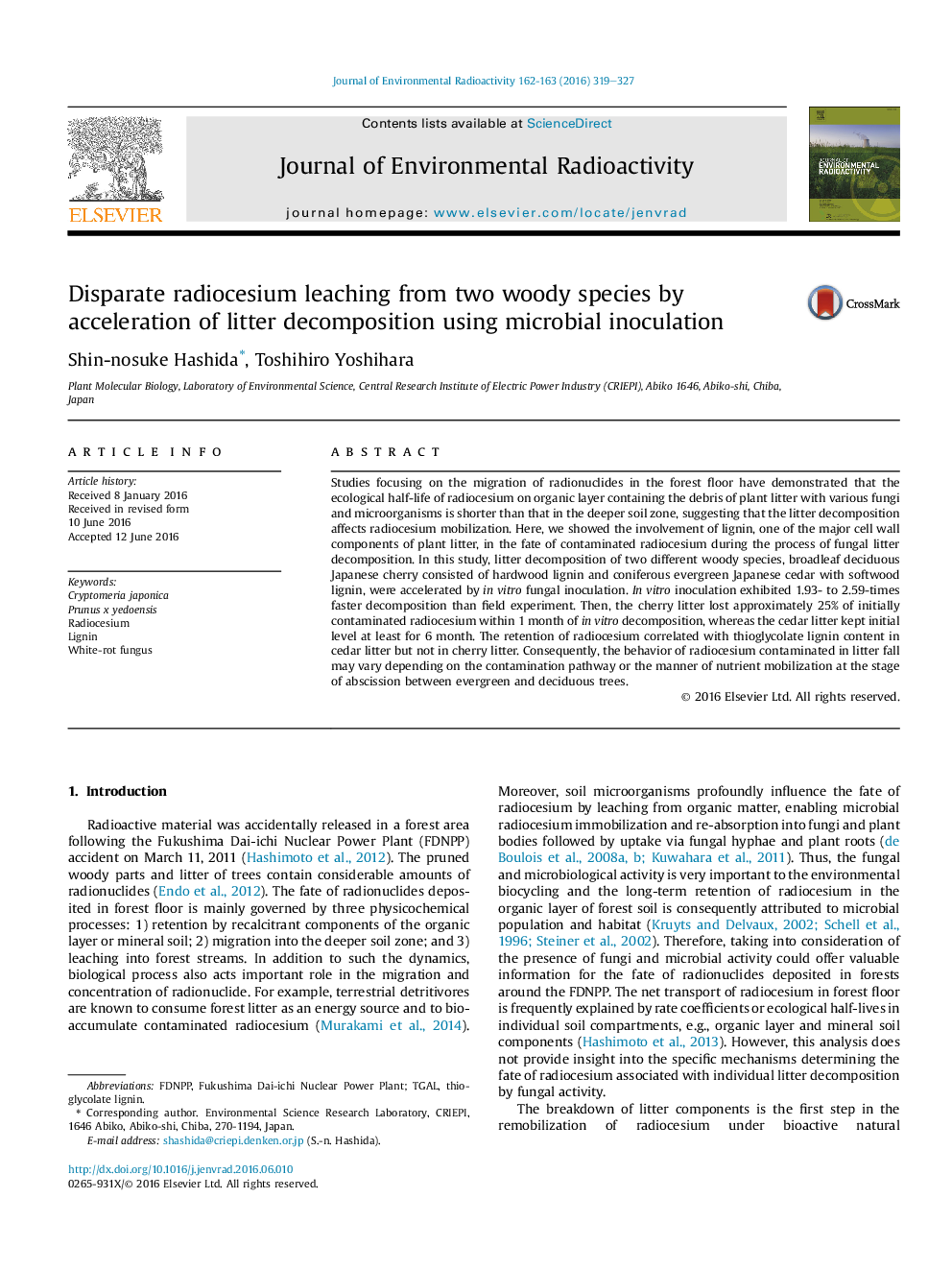| Article ID | Journal | Published Year | Pages | File Type |
|---|---|---|---|---|
| 8081654 | Journal of Environmental Radioactivity | 2016 | 9 Pages |
Abstract
Studies focusing on the migration of radionuclides in the forest floor have demonstrated that the ecological half-life of radiocesium on organic layer containing the debris of plant litter with various fungi and microorganisms is shorter than that in the deeper soil zone, suggesting that the litter decomposition affects radiocesium mobilization. Here, we showed the involvement of lignin, one of the major cell wall components of plant litter, in the fate of contaminated radiocesium during the process of fungal litter decomposition. In this study, litter decomposition of two different woody species, broadleaf deciduous Japanese cherry consisted of hardwood lignin and coniferous evergreen Japanese cedar with softwood lignin, were accelerated by in vitro fungal inoculation. In vitro inoculation exhibited 1.93- to 2.59-times faster decomposition than field experiment. Then, the cherry litter lost approximately 25% of initially contaminated radiocesium within 1 month of in vitro decomposition, whereas the cedar litter kept initial level at least for 6 month. The retention of radiocesium correlated with thioglycolate lignin content in cedar litter but not in cherry litter. Consequently, the behavior of radiocesium contaminated in litter fall may vary depending on the contamination pathway or the manner of nutrient mobilization at the stage of abscission between evergreen and deciduous trees.
Keywords
Related Topics
Physical Sciences and Engineering
Energy
Nuclear Energy and Engineering
Authors
Shin-nosuke Hashida, Toshihiro Yoshihara,
